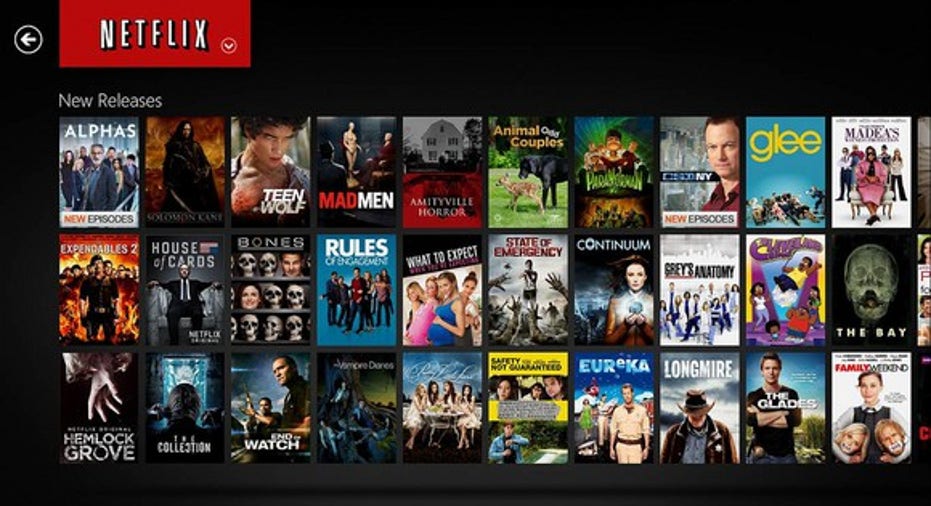5 Things Netflix, Inc. Management Wants You to Know

Netflix (NASDAQ: NFLX) reported blowout third-quarter earnings earlier this week, beating analysts' estimates and its own forecast by a country mile.
Following the earnings release, two Wall Street analysts interviewed Netflix's leadership team to talk about the quarterly results and Netflix's long-term outlook. Here are five key highlights of their discussion.
Inexorable growth as the market expands
In Q2, Netflix missed its subscriber growth forecast by a wide margin. It blamed the shortfall in part on higher churn -- the monthly cancellation rate -- related to headlines about price increases. (Netflix didn't actually raise its sticker prices, but it started "un-grandfathering" longtime subscribers from the below-market prices they had been enjoying recently.)
A few months later, Netflix CEO Reed Hastings is taking a longer-term view of the market. He noted that despite all of the ups and downs, Netflix has grown its user base by about 12 million subscribers during the first three quarters of 2016, almost exactly in line with its growth during the same period in 2015.
This is suggestive of a constant trend toward adoption of internet TV. Indeed, Hastings sees internet TV as a megatrend that will drive relatively steady growth for many years to come.
Bringing some original content production in house
When Netflix first moved into original content a few years ago, it contracted with various studios to produce shows for it. Netflix got the TV rights, but generally not complete exclusivity. The content owners have sought to maximize their revenue, and as a result you can buy a season of House of Cards on DVD or even buy a digital copy from Amazon.com.
Netflix recently launched its own in-house production arm. Going forward, it wants to produce as much of its original content in-house as possible, in order to keep its original content totally exclusive to Netflix and to avoid paying a middleman. However, Netflix will still be open to shows produced by other studios when it can't get the rights to produce them itself.
Set-top box integration is nice but not a big catalyst
In July, Netflix reached a deal with cable giant (and one-time nemesis) Comcast (NASDAQ: CMCSA) to integrate Netflix into the latter's highly regarded X1 set-top box. By the end of the year, Comcast TV subscribers won't need to switch to a Roku or Chromecast to watch Netflix.
Set-top box integration has been a priority for Netflix's management in recent years. In foreign markets where Netflix isn't yet ubiquitous, set-top box integration can have a meaningful impact on consumer awareness and subscriber growth. By contrast, due to Netflix's high penetration rate in the U.S., the Comcast partnership isn't likely to be a major growth catalyst.
That said, by making Netflix even easier to use, the company hopes to retain more customers and gradually draw in new ones.
Netflix will continue to invest heavily in content
Since the beginning of 2015, Netflix CFO David Wells has repeatedly said that the company will start reporting "material" profits in 2017. However, that doesn't mean it will generate any free cash flow. In fact, free cash flow is plunging due to Netflix's investments in producing original content in-house. Content production requires a lot of cash up front.
Upfront costs for producing original content are weighing on free cash flow. Image source: The Motley Fool.
Netflix is now on pace to burn through about $1.5 billion this year. Cash outflows should start to moderate next year as Netflix becomes more profitable. However, if the company is very successful in attracting new users, it might ramp up content spending even further. As a result, it could be several years until Netflix starts generating positive free cash flow.
No price increase in the pipeline
One piece of good news for consumers is that no further price increases are on the horizon -- except possibly in markets with rapid inflation or rising taxes. After it completes the current round of "un-grandfathering," Netflix will stand pat on pricing for a while.
Netflix executives recognize that the company has pricing power, but they also know from experience how easy it is to alienate some consumers through price increases. For now, the company will continue to improve its offerings in order to make customers even more loyal. That will put it in a more secure position to raise prices sometime in the future.
A secret billion-dollar stock opportunity The world's biggest tech company forgot to show you something, but a few Wall Street analysts and the Fool didn't miss a beat: There's a small company that's powering their brand-new gadgets and the coming revolution in technology. And we think its stock price has nearly unlimited room to run for early in-the-know investors! To be one of them, just click here.
Adam Levine-Weinberg has no position in any stocks mentioned. The Motley Fool owns shares of and recommends Amazon.com and Netflix. Try any of our Foolish newsletter services free for 30 days. We Fools may not all hold the same opinions, but we all believe that considering a diverse range of insights makes us better investors. The Motley Fool has a disclosure policy.